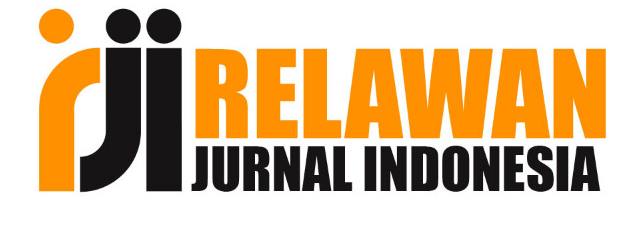HIGH 5 STRATEGIES AS AN ALTERNATIVE TEACHING STRATEGY IN EFL CLASSROOM
DOI:
https://doi.org/10.36982/jge.v3i1.20Abstrak
This study describes the use of High 5 Strategies in English Foreign Language classroom. As one of teaching strategies, High 5 strategies can help the students to tackle their reading. High 5 strategies consists of activating background knowledge, questioning, analyzing text structure, creating mental images, and summarizing. First, activating background knowledge is the important concept of reading that can help the students to connect what they already learned or knew before so that it allows the students to get a better understanding of what it is about. Second, question is also the important way for students to form questions that help them understand what to look for as they read. Then, the students need to understand the structure of the text that help them easier comprehend each part of paragraph in the text by analyzing the text structure. Next, creating mental image or visualizing is used to imagine the structure of the text that the students have known before, so as they read, they should also imagine how the structure is. Finally, the students summarize all important information that they already got using the previous strategies. High 5 strategies provide an opportunity for all the EFL students to activate their background knowledge and form question in their mind, analyze, visualize and summarize the reading. In short, High 5 strategies can be used to help the students to learn better especially in improving their reading skill.
Referensi
Bamford, J., & Day, R. R. (2004). A cognitive view of reading: Extensive reading activities for teaching language. Cambridge, UK: Cambridge UP. Retrieved from http://books.google.co.id
Carnie, D., Silbert, J., & Kameenui, E. (1997). Direct instruction reading (3rd ed.). Upper Saddle River, NJ: Prentice-Hall.
Dymock, S., & Nicholson, T. (2010). “High 5!†strategies to enhance comprehension of expository text. The Reading Teacher, 64(3), 166-178.
Fisher, D., Frey, N., & Lapp, D. (2012). Building and activating students’ background knowledge: It’s what they already know that counts. Middle School Journal, 22-31.
Galda, L., & Beach, R. (2001). Theory and research into practice: Response to literature. Reading Research Quarterly, 36, 64-73.
Goldman, S. R., & Rakestraw, J. A. (2000). The structure of text. In M. L. Kamil, P. Monesnthal, P.D. Pearson, and R. Barr (Eds), Handbook of reading research. Mahwah, NJ: Lawrence Erlbaum Associates, Inc.
Grabe, W., & Stoller, F. (2002). Teaching and researching reading. Longman: Edinburgh gate Pearson Education Limited.
Herber, H. L. (1978). Teaching reading in content areas. Upper Saddle River, NJ: Prentice-Hall.
Karbalaei, A, & Rajyashree, K. S. (2010). The impact of summarization strategy training on university ESL learners’ reading comprehension. The International Journal of Language Society and Culture, 30, 41-53. Retrieved from http://www.educ.utas.edu.au/users/tle/JOURNAL/issues/2010/30-4.pdf
Khoshsima, H., & Tiyar, F. R. (2014). The effect of summarizing strategy on reading comprehension of Iranian intermediate EFL learners. International Journal of Language and Linguistics, 2(3), 134-139. Retrieved from www.sciencepublishinggroup.com
Krashen, S.D. (1989). Language acquisitions, intention, and applications. New York, NY: Prentice-Hall International, Ltd.
Meneghetti, C., Carretti, B., & Beni, R. D. (2006). Components of reading comprehension and scholastic achievement. Learning and Individual Differences, 16, 291–301. Retrieved from www.sciencedirect.com
Meyer, B. J. F., & Ray, M. N. (2011). Structure strategy interventions: Increasing reading comprehension of expository text. International Electronic Journal of Elementary Education, 4(1), 127-152. Retrieved from http://www.iejee.com
Neufeld, P. (2005). Comprehension instruction in content area classes. The Reading Teacher, 59(4), 302-312. Retrieved from http://www.tc.edu
OECD, PISA. (2009). The result of students performance in reading, mathematics and science database. Retrieved from http://www.oecd.org/pisa/46643496.pdf
Palmer, J. C. (2003). Summarizing techniques in the English language classroom: An international perspective. PASAA, 34, 54-63.
Rosenblatt, J. (2006). The use of prior knowledge in reading. New York, NY: New York University. Retrieved from http://psych.nyu.edu/pelli/highschool.html#2006
Rudell, M. R. (2005). Teaching content reading and writing (4th ed.). Hoboken, NJ: Wiley.
Schieffer, C, Marchand-Martella, N.E., Martella, R.C., Simonsen, F.L., and Waldron-Soler, K.M. (2002). An analysis of reading mastery program: Effective components and research review. Journal of Direct Instruction, 2(2), 87-119. Retrieved from www.nifdi.org/pdf/JDI_02_02_03.pdf
Ueta, T. (2005). Teaching reading. Birmingham: English for International Pupils Unit. Retrieved from www.kochinet.ed.jp.pdf
Yuksel, I. (2012). Activating students’ prior knowledge: The core strategies. World Applied Sciences Journal, 20(8), 1197-1201. Retrieved from www.idosi.org
Zwiers, J. (2004). Building reading comprehension habit in graders 6-12: A tookit of classroom activities. Menlo Park, CA: International Reading Association, Inc.
Unduhan
Diterbitkan
Cara Mengutip
Terbitan
Bagian
Lisensi
Global Expert: Jurnal Bahasa dan Sastra is published by Universitas Indo Global Mandiri and licensed under a Creative Commons Attribution-ShareAlike 4.0 International License.











